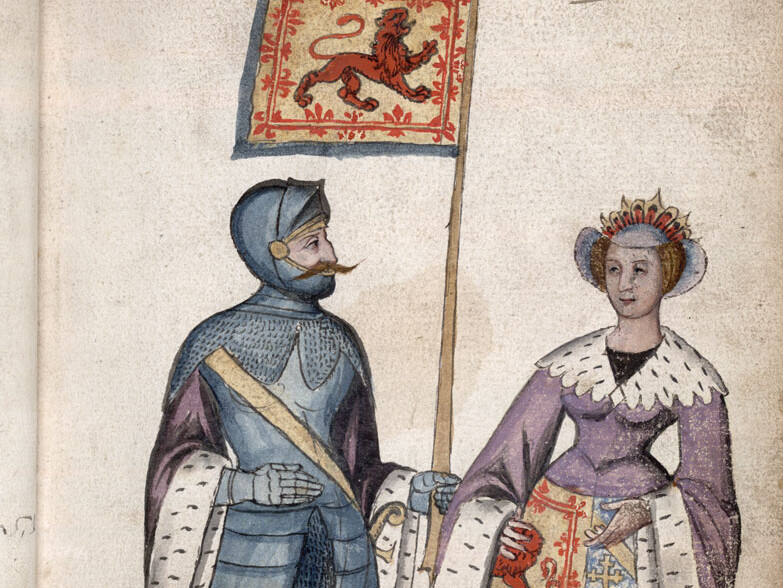Our Patriot monarch, King Robert the Bruce, belonged to the Norman family De Bruis, which, in the person of Robert De Bruis, came to England with the Conqueror in 1066. This knight received the lands of Skelton in Yorkshire, and his son, Robert, who was an associate of the prince who afterwards became David I. of Scotland, obtained the Lordship of Annandale.
At the Battle of the Standard (1138) Robert Bruce fought on the English side; while his son, Robert, 2nd of Annandale, fought under David and was taken prisoner, it is said, by his own father. He had two sons, Robert and William. Robert, the elder, died before 1191. William, his brother and heir, died in 1215, and was succeeded by his son, Robert, 5th Lord, who died in 1245, having married Isabella of Huntingdon, great-granddaughter of King David I. Their son, Robert de Bruce, was in 1255 nominated one of the Regents of the Kingdom of Scotland, and guardian of Alexander III. In 1290 he claimed the Crown of Scotland, as nearest heir of King Alexander III. King Edward I. overruled all the pleas of Bruce, and adjudged the Kingdom of Scotland to Baliol, whose claim was strictly the preferable under the law of succession attributed to King Malcolm Mackenneth. Bruce died in 1295, aged eighty-five. His eldest son, Robert de Bruce, was born in 1245 and died in 1304.
By Margaret, Countess of Carrick, his wife, he left a large family – His eldest son, ’Robert the Bruce, born 11th July 1274, asserted his claim to the Scottish Crown (which had fallen vacant by reason of Baliol’s disgraceful renunciation of his throne). He ascended the throne of his ancestors, and was crowned at Scone, 27th March, 1306. After many vicissitudes, the power of King Robert I. was finally cemented by his splendid and decisive victory at Bannockburn, 1314. He died at Cardross, in Dumbartonshire, 7th June, 1329, aged fifty-five; he was interred in the Abbey Church of Dunfermline.
The Earl of Elgin, descended from Bruce of Clackmannan, who sprang from a cousin of King Robert’s, is now acknowledged chief of the family. His seat is at Broomhall, in Fife, and the old fortalice of his house, Clackmannan Castle, is a picturesque tower whose battlements still overlook the valley of the Forth. The Earldom was conferred in 1633 on Thomas, 3rd Lord Bruce of Kinloss, who descended from Sir David Bruce, 7th Baron of Clackmannan.
(T. INNES 1938)


